
Palmyra
Palmyra is probably the most well-known of Syria’s attractions and is certainly one of the most impressive historical sites of the region. It’s position, in the middle of the Syrian desert, only adds to its aura and even if you are bored with visiting another ancient bunch of rocks you can’t fail to be impressed by its desert surroundings and watched over by a magnificent arab castle.
The ruins date largely from 2nd century AD but the site itself is much older, dating back to 2000 years BC. It has always been an important staging post mid-way between the Euphrates valley and the fertile coast. It owes this importance to being one of few oases in this desert – of course the Roman name of Palmyra from palms and the arabic and more ancient name of Tadmor meaning dates.
Its most famous period of history led to its downfall. As Rome’s grip on the region weakened around 200AD the city was taken over by local rulers. The latest of these rulers was Queen Zenobia who subsequently defeated the Roman army and ruled over a large area of the middle east. She was supposed to have rivalled Cleopatra in beauty and overshadowed her famous predecessor in valour and ability to rule. Eventually, however, it all had to go wrong and her empire crumbled rather quickly and she was carted off to Rome bound in gold chains. shortly afterwards the city of Palmyra was reduced to rubble. It never recovered from this and was effectively lost from the annals of history. Then, in the 18th century, the buried desert city was rediscovered by intrepid English merchants. After all it was at least a 5 day journey from civilisation in an area notorious for bandits. Scientific study of the area was started in the 1920s and this has continued up until the present day with new discoveries being made regulary.
There’s not much to see on the road to Palmyra. It’s over 200kms from Damascus – all desert.

But you’ve got to watch the turn offs as you could end up in some tricky places.

There are a few picturesque mountains to break up the monotony and admire on the way.
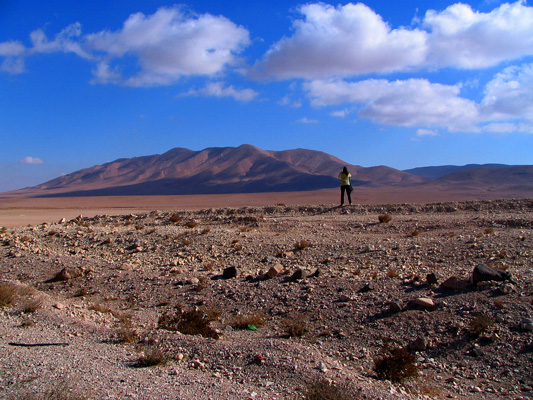
…but then again…
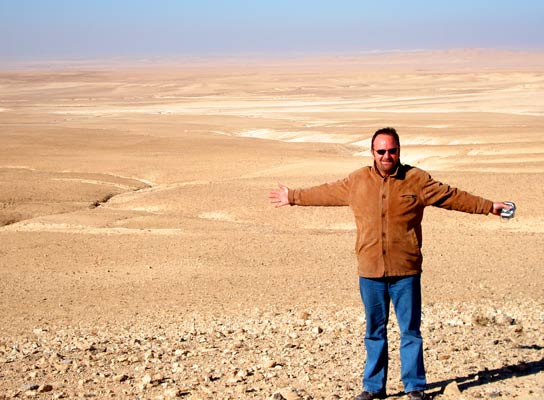
There is actually one enterprising man who has set up a cafe (called Baghdad cafe), half way to Palmyra in the middle of the desert. He’s got a few rooms where tourists can stay and use as a base to explore the surroundings. He said a while ago an English guy stopped by for a few days – he had bought a camel in Palmyra for $2500 and was riding it to Damascus. He never did find out what happened to the modern day Lawrence…

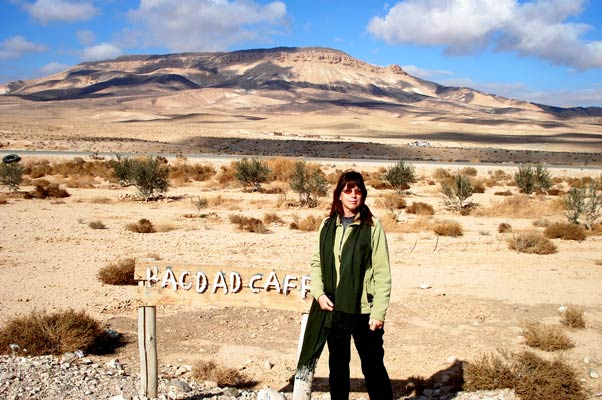
We get there eventually and it’s just another bunch of old rocks and stones… the oasis can be seen in the background and beyond that… endless desert.

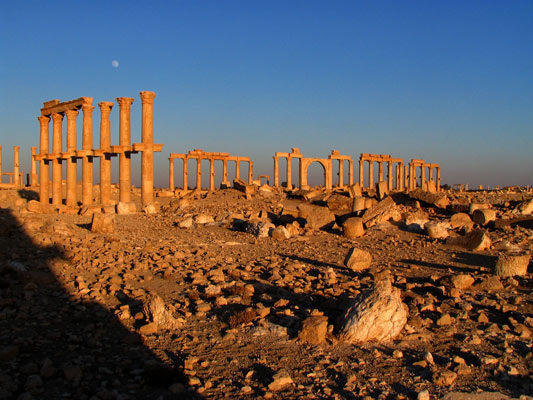
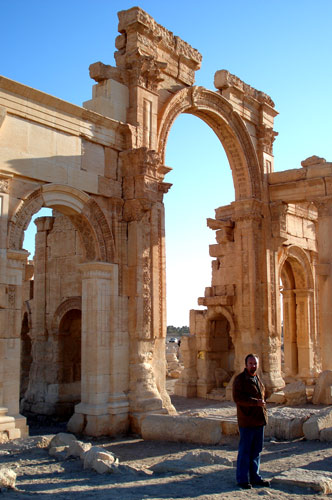
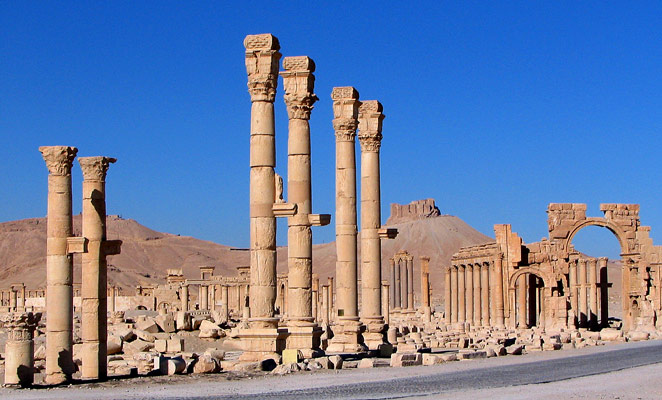
The most complete structure in the site is the Temple of Bel. It was dedicated to the most important god in the Palmyrene pantheon and it is still an impressive building.
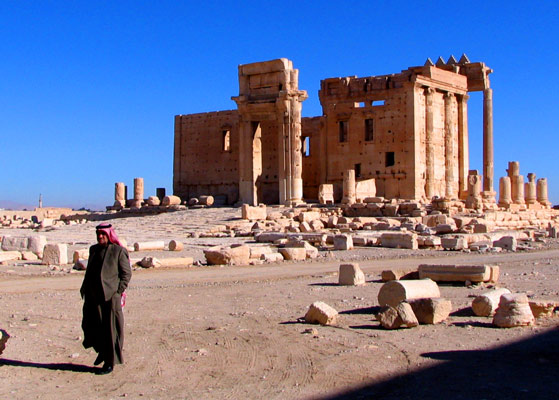
Dominating the site is an Arabic fortress on a hill. This is Qala’at Ibn Maan. It was built in the 17th century by the famous Lebanese warlord Fakhredine (Now immortalised in the name of a popular restaurant in Amman). It has been extensively renovated and is an excellent place to watch the shadows taking over the ruins at sunset.
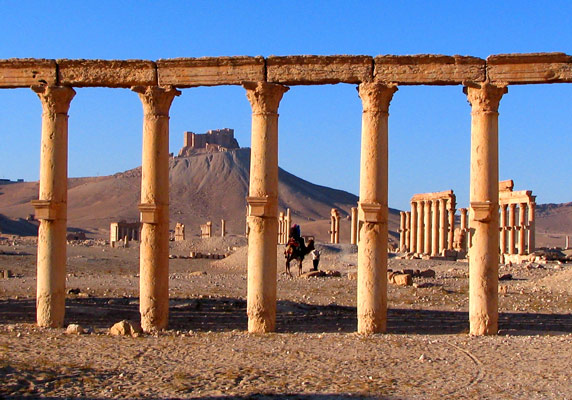
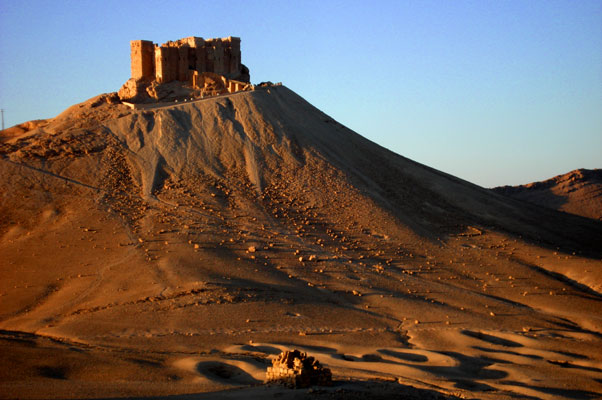
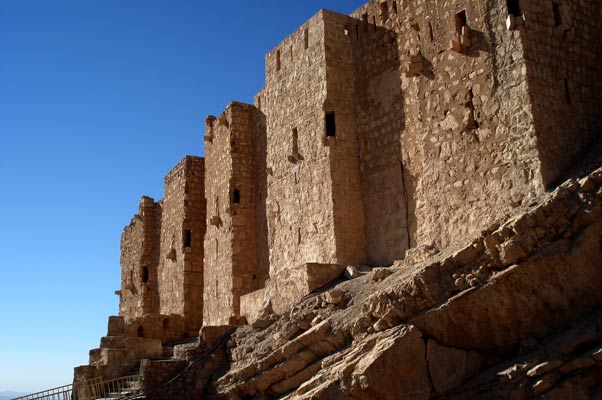
A local custom was to put coffins in these funerary towers of which there are many. This one is in pristine condition but doesn’t contain coffins anymore.

We did have a bit of car trouble – a puncture
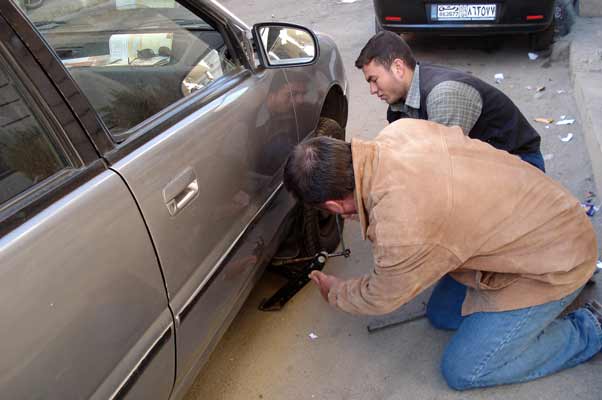
…but were aided by a bloke in a beat up old Mercedes – one of many which could be seen on the streets of Palmyra new town – they didn’t seem much younger than the ruins!




We saw quite few Bedouin camps strewn across the desert
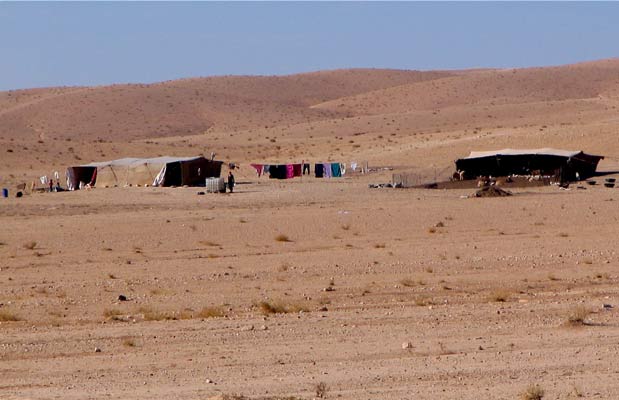
We didn’t return to Damascus, but we had another 200km trek across the desert to our next destination – Hama and the crusader castle of Crac des Chevaliers.

We also made a video – the Road to Palmyra:
More photos of our trip here.